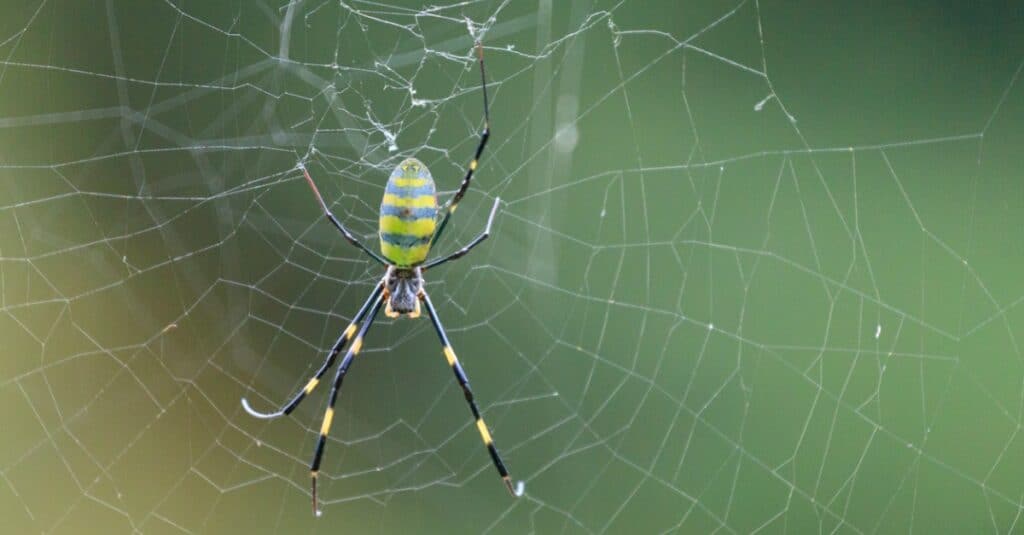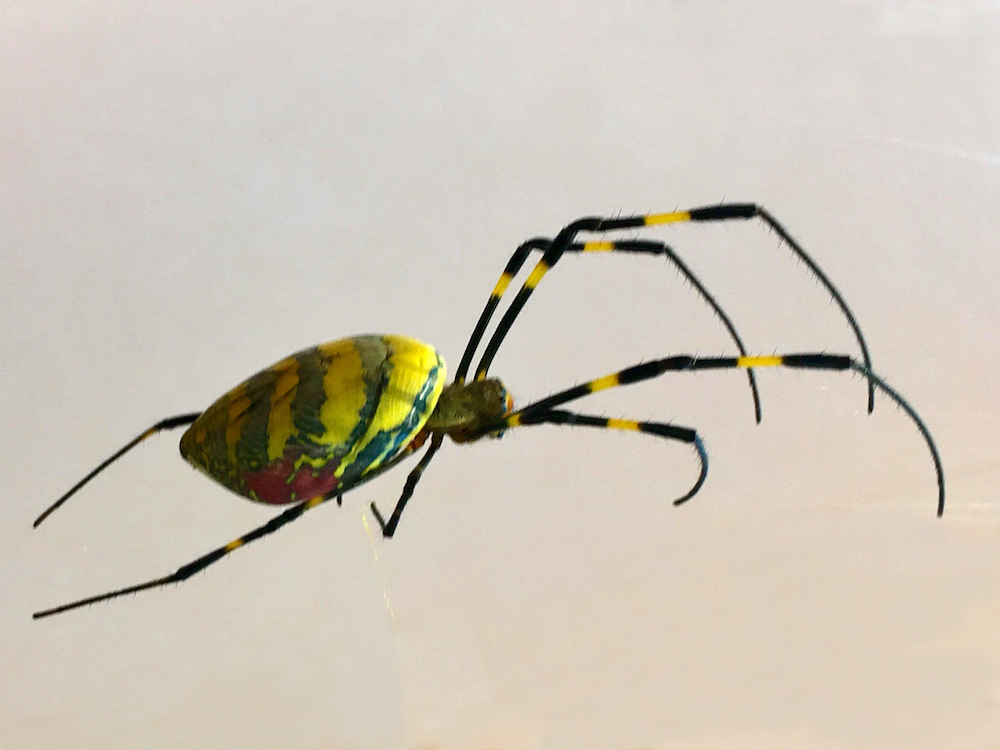

Don’t blame the Joro spider.Or, if you want to be fancy, the Jorō Spider. "Humans are at the root of their invasion. "There’s really no reason to go around actively squishing them," Frick said. In fact, the researchers say that the Joro is much more likely to be a nuisance than a danger, and that it should be left to its own devices. While most invasive species tend to destabilize the ecosystems they colonize, entomologists are so far optimistic that the Joro spider could actually be beneficial, especially in Georgia where, instead of lovesick men, they kill off mosquitos, biting flies and another invasive species - the brown marmorated stink bug, which damages crops and has no natural predators. "Anecdotally, right before we published this study, we got a report from a grad student at UGA who had accidentally transported one of these to Oklahoma." "The potential for these spiders to be spread through people's movements is very high," co-author Benjamin Frick, an undergraduate student at the University of Georgia said in the statement. shows, the spider is an expert stowaway, and it could easily arrive at a new location by riding on a car or hiding in luggage. As its accidental introduction to the U.S.

White novel "Charlotte's Web." But the Joro won't just resort to its traditional means of traversal to colonize new terrain. When Joro spider hatchlings emerge in the spring, they ride the wind on a strand of silk, floating across enormous distances like the baby spiders in the E.B. Goliath Birdeater: Images of a colossal spider "Just by looking at that, it looks like the Joros could probably survive throughout most of the Eastern Seaboard here, which is pretty sobering," Davis said. and sits across roughly the same latitude. Additionally, Joro spiders exist in most parts of their native Japan - warm and cold - which has a very similar climate to the U.S. The scientists came to this conclusion after comparing the Joro spider to a close cousin, the golden silk spider, which migrated from tropical climates 160 years ago to establish an eight-legged foothold in the southern United States.īy tracking the spiders' locations in the wild and monitoring their vitals as they subjected caught specimens to freezing temperatures, the researchers found that the Joro spider has about double the metabolic rate of its cousin, along with a 77% higher heart rate and a much better survival rate in cold temperatures. That's perhaps good news, as the spiders are destined to spread far and wide across the continental U.S., researchers say. But despite its threatening appearance and its fearsome standing in folklore, the Joro spider's bite is rarely strong enough to break through the skin, and its venom poses no threat to humans, dogs or cats unless they are allergic. True to its mythical reputation, the Joro spider is stunning to look at, with a large, round, jet-black body cut across with bright yellow stripes, and flecked on its underside with intense red markings. The spider gets its name from Jorōgumo, a Japanese spirit, or Yōkai, that is said to disguise itself as a beautiful woman to prey upon gullible men.

Since the spider hitchhiked its way to the northeast of Atlanta, Georgia, inside a shipping container in 2014, its numbers and range have expanded steadily across Georgia, culminating in an astonishing population boom last year that saw millions of the arachnids drape porches, power lines, mailboxes and vegetable patches across more than 25 state counties with webs as thick as 10 feet (3 meters) deep, Live Science previously reported.Ĭommon to China, Taiwan, Japan and Korea, the Joro spider is part of a group of spiders known as "orb weavers" because of their highly symmetrical, circular webs.


 0 kommentar(er)
0 kommentar(er)
